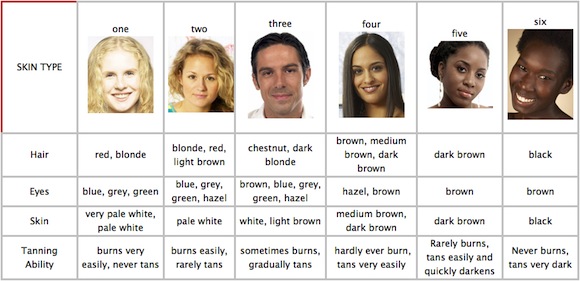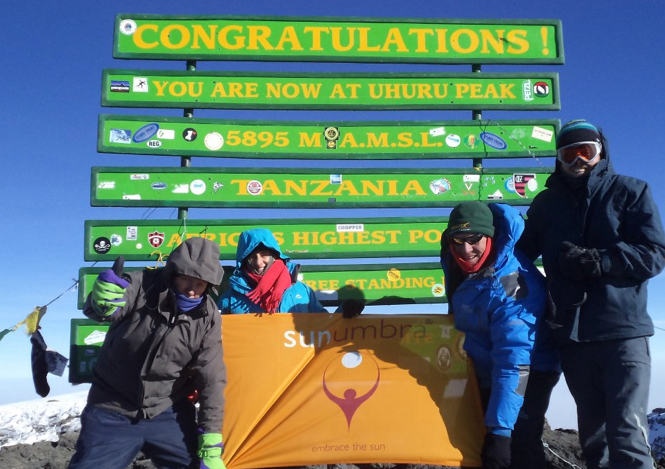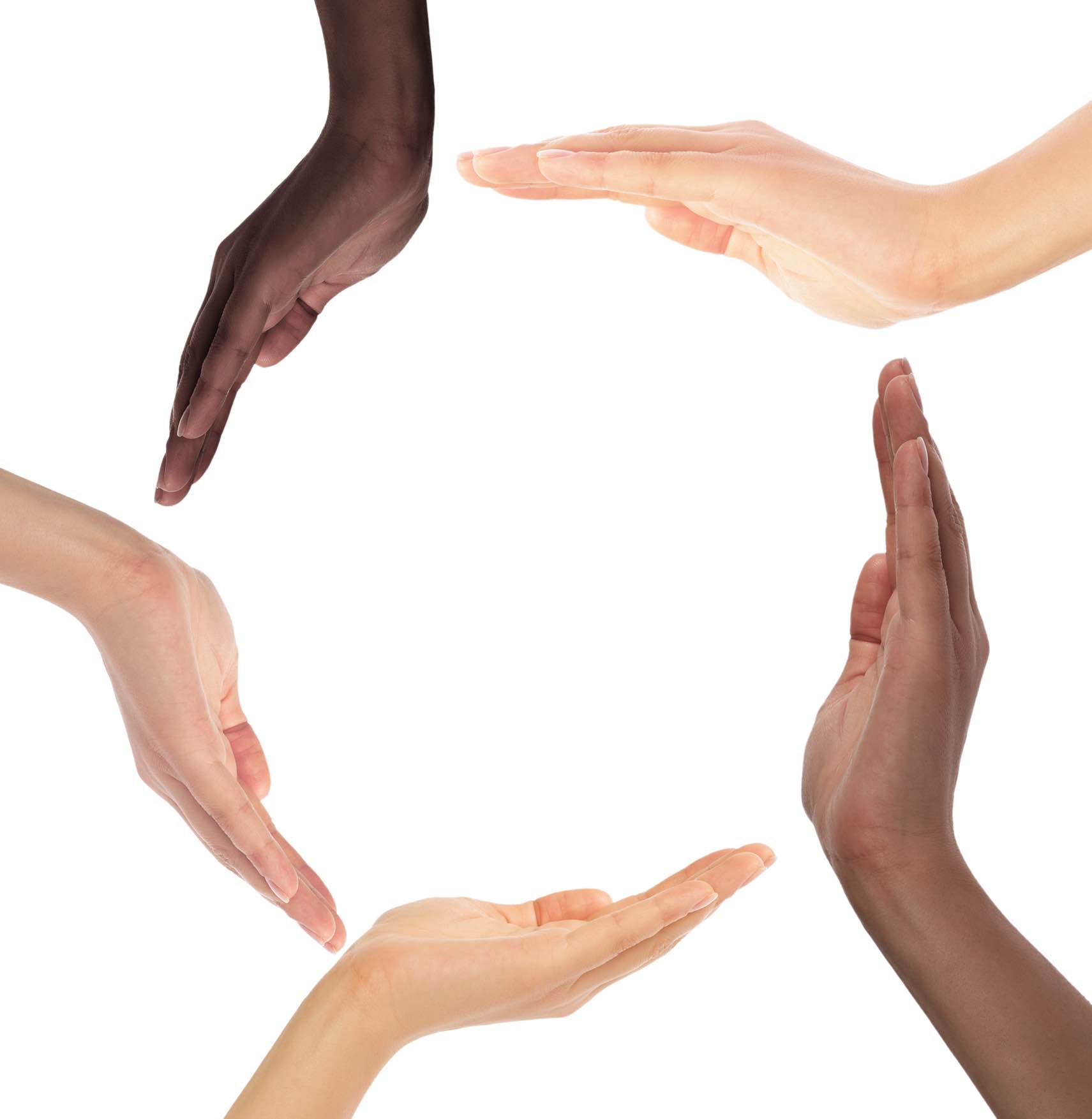Skin types
Which of the multitude of skin types is yours? This is one of the key things to understand when you are concerned about protecting your skin from the potentially damaging UV rays of the sun. Ask most people what type of skin they have and they'll tell you whether it's dry, oily or combination type.
What I'm talking about here is the pigment type.
Some skin types are really delicate when it comes to being outdoors in the sunshine. Some are the opposite and don't worry much about getting sunburnt at all. Every type of skin is different.
However, when it comes such things as the ability to create Vitamin D, as well as concerns such as skin cancer, all skin types are affected.
Latitudes and altitudes affect skin types differently

Types of skin range from very little pigment (Type 1) to very darkly pigmented (Type 6). The lower your type the easiest it is to burn and therefore the highest the risk for skin cancer.
However, complimenting this, the lower the skin type, the greater the ability to create Vitamin D. Conversely, the higher the type, the lower the risk of skin cancer and the lesser the ability to create Vitamin D.
Geographically types 1 and 2 are better suited to be living in high latitudes where the sun's rays are never that direct or as intense as in the lower latitudes. Skin types 3 and 4 typically are well suited for the middle latitudes and types 5 and 6 the ones closest to the equator or where the sunshine is intense as in Northern Africa and Australia where desserts are prominent.

High altitudes also increase the intensity of the sun's rays, so the combination of the 2 - high altitude plus low latitude - equates to some interesting challenges for your skin! People climbing Kilimanjaro in Kenya have discovered this very thing, some to their great detriment as they descend from their summit efforts with terribly sunburnt faces, lips, legs and arms.
I have read about a young dark skinned, (skin type 6), climber called Sibusiso Vilane, in his book called "To the Top from Nowhere". He speaks about how his skin survived incredibly well when climbing, as opposed to his paler skinned climbing mates. He was the first black African to ascend Everest successfully and although unprepared for the skin challenges he would encounter, it seems he wasn't badly affected at all.
Kilimanjaro, which at 6000m as well as being on the equator, probably presents the toughest challenge for skins no matter what type you are. However, Everest and most other mountain climbing challenges, present huge skin condition issues to all climbers.

Skin types, Vitamin D and Cancer

However, just as those with a fair skin need to be hugely diligent and protective of their skin, people with darker skin cannot afford to be lazy about protection from the sun as they can also overdo the sunlight and end up with the resultant DNA damage. But getting enough sunshine for Vitamin D creation is also important and hugely beneficial for your health. Knowing your skin type helps you to identify how much time you need in the midday sun to get just enough of the sun's UVB rays. It is the UVB rays that provide the skin with the ability to crate Vitamin D. UVB rays are at their strongest when the sun is at it's highest or when your shadow is non-existent or at it's shortest. As soon as your shadow is longer than you are, you can forget about making Vitamin D.
Just remember that this is when UVA rays are still capable of doing their damage, so keep wearing that sunscreen!
Whatever your skin type, the important thing is to just get the balance right.




New! Comments
Have your say... please leave me a comment in the box below.